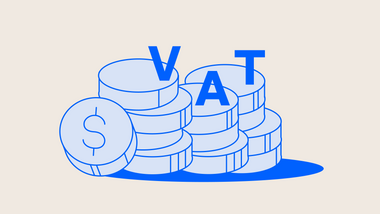A Guide to Registering Charges at Companies House
In this comprehensive guide, we explore the ins and outs of charge registration at Companies House. Learn about the different types of charges, step-by-step registration process, priority of charges, and their impact on company assets.

The registration of a charge is the process of recording a charge created by a company over its assets at the Companies House to secure a debt or loan.
Welcome to our comprehensive guide to registering charges at Companies House. In this article, we will break down the charge registration process, from understanding the concept of charges to common mistakes and pitfalls to avoid. Whether you are a business owner, a company secretary, or a law professional, this guide will provide you with the knowledge and insights you need to navigate the charge registration process effectively.
Understanding the Concept of Charges
Before diving into the intricacies of charge registration: what is a registration charge? In simple terms, a registration charge is a form of security a lender takes over a company's assets to secure a loan or the performance of an obligation. This can include assets such as property, equipment, or intellectual property.
Charges can be fixed or floating, depending on whether the assets being charged are specific and identifiable. Fixed charges cover specific assets, whereas floating charges cover assets that may change over time, such as stock or cash in the bank.
In the world of finance and business, charges play a significant role in protecting the interests of lenders. By creating a charge, lenders ensure that they have a legal claim over a company's assets in case of default or non-payment. This gives them a sense of security and reduces the risk of lending money.
Fixed charges are like a fortress built around specific assets. They provide lenders with higher security as the assets are clearly identified and cannot be easily disposed of or transferred without the lender's consent. For example, if a company takes a loan to purchase a piece of machinery, the lender may register a fixed charge over that machinery. If the company fails to repay the loan, the lender can seize and sell the machinery to recover their money.
Floating charges, on the other hand, are more flexible and cover a broader range of assets. They are often used to secure loans where the assets are subject to change or turnover. For instance, a company may have a floating charge over its inventory. The inventory levels fluctuate as the company buys and sells goods, but the lender's charge remains in force. In the event of default, the lender can take control of the remaining inventory to recover their funds.
It is important to note that charges must be registered with the appropriate authority to be legally enforceable. In the United Kingdom, for example, charges over company assets must be registered with Companies House within a specific time frame. Failure to register a charge can void it against liquidators, administrators, and other creditors.
Understanding the different types of charges and their implications is crucial for lenders and borrowers. Lenders need to assess the level of security they have over the assets they are lending against, while borrowers need to be aware of the potential consequences of defaulting on their obligations. By having a clear understanding of charges, all parties involved can make informed decisions and mitigate risks in finance and business.
Types of Charges and Applicability
There are various types of charges, each with its own applicability and requirements, including the fees charged by online marketplaces like eBay. If you are a seller on eBay, it is important to understand these fees and how they may impact your profits. Consider using an eBay fee calculator to determine the costs associated with your sales.
Different types of charges and their characteristics
Some common types of charges include:
- Fixed Charges: As mentioned earlier, fixed charges are created over specific company assets.
- Floating Charges: Floating charges cover a company's assets that may change over time. They are generally more flexible and allow the company to deal with these assets in business.
- Legal Charges: Legal charges are created when a property is mortgaged.
- Debentures: Debentures are a type of loan agreement where the company borrows money from debenture holders and grants them security through fixed or floating charges.
Situations requiring charge registration
It's important to be aware of situations that require charge registration, such as when a company takes out a loan or secures its assets to creditors. Being well-informed about the types of charges and their applicability helps businesses protect their interests and maintain legal compliance.
Registration Process and Requirements
Registering charges at Companies House involve a structured process and certain requirements that must be fulfilled. Here's a step-by-step overview of the registration process:
Identify the charge type
Determine the type of charge and the assets being charged, whether it's a fixed charge, floating charge, or other specific charge forms.
Prepare documentation
Prepare the necessary legal documents, including a charge instrument or a debenture. Ensure that the charge document is properly executed by all parties involved.
Complete the charge registration form
Complete the appropriate registration forms provided by Companies House, providing all relevant details about the charge and the assets involved. You will typically fill out an MR01 charge form.
Pay the fee
Send the registration forms along with the prescribed fee to Companies House. If you outsource your accounting services and have your company registered with the, they can help pay this fee for you.
Submit the Application
Once registered, Companies House will issue a Certificate of Registration.
It is important to note that failure to register charges with Companies House within the prescribed time limits may result in severe penalties. Therefore, it is essential to stay organised and comply with the registration requirements.
Charge Priority and Effects
Understanding charge priority and the effects of charge registration is vital for both companies and creditors.
Priority of registered charges
The priority of registered charges determines the order in which creditors' claims are settled in case of insolvency or default. Generally, fixed charges have higher priority over floating charges, providing the holders of fixed charges with a stronger claim to the specific assets involved.
Effects of charge registration on company assets
The registration of charges, including Amazon seller fees if you’re an ecommerce business owner, can significantly impact company assets. Registered charges create a legal obligation on the company's assets, restricting their disposal without the creditor's consent. This ensures that creditors, including Amazon, have security over the assets and enhances their confidence in providing financing to the company. For all kinds of businesses, comprehending charge priority and the effects of charge registration helps manage debt and maintain relationships with creditors while safeguarding their assets.
Common Mistakes and Pitfalls
Despite its importance, charge registration can be complex, and there are common mistakes and pitfalls that one should be aware of. Some of these include:
- Failure to register on time: Late registration can result in penalties and loss of priority.
- Inaccurate or incomplete information: Providing incorrect or incomplete details in the registration forms can lead to complications and delays.
- Not understanding the implications: Failing to grasp the legal implications of charge registration can have serious consequences for all parties involved.
By being aware of these common pitfalls, you can avoid unnecessary complications and ensure a smooth charge registration process.
Charge Modification and Satisfaction
Charge registration is not a one-time process. There may be instances where charges need to be modified or satisfied. Modifying a charge involves making changes to the terms of the charge, such as extending the repayment period or adding additional collateral. On the other hand, satisfying a charge means discharging it entirely after the obligations have been fulfilled.
Whenever modifications or satisfactions occur, it is important to update the records at Companies House accordingly. Failure to do so may lead to inaccurate information and potential legal complications in the future.
Conclusion
In conclusion, charge registration is a critical process that businesses and lenders should approach with care and attention to detail. Understanding the concept of charges, the types of charges and their applicability, the registration process and requirements, as well as charge priority and effects, is essential for a smooth and compliant registration process.
It is important to avoid common mistakes and pitfalls and stay proactive in managing charge modification and satisfaction. By following these guidelines and staying informed, you can navigate the charge registration process successfully and safeguard your interests as either a borrower or a lender. Following expert advice from company registration or accounting experts can help ensure this process is smooth for you.







